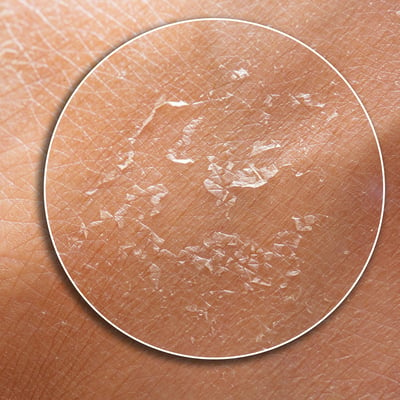
When Kris Jenner revealed her facelift on network television in 2011, the culture changed. The world learned that facelifts are not only common but can have stunning results. Gone were the days of overly tight, unnatural looks. And today we’ve come even further: Modern facelifts now deliver subtle, customized results that enhance your natural beauty and help you feel like yourself again.
Few realize, however, that there are actually several different kinds of facelift. While some involve a more complete transformation, others are more subtle. Many people who would not have even considered a facelift a decade ago can now find a procedure that feels right for them.
Pause: What is a facelift, exactly?
A facelift (“rhytidectomy” is the medical term) is a surgical procedure that improves visible signs of aging in the face and neck. By tightening deeper skin and muscle structures, removing or redistributing fat, and re-draping the skin, facelifts restore youthful contours and smooth out wrinkles.
What Are the Most Popular Kinds of Facelifts?
The advancements in facelift techniques now offer highly customizable options to address individual needs, making it easier than ever to achieve natural, balanced results. Whether you’re after a subtle refresh or a dramatic transformation, there’s a popular facelift technique for you.
1. The Traditional Facelift: Comprehensive Rejuvenation
A traditional facelift is the most extensive option for addressing visible signs of aging in the lower face and neck. It works by lifting the skin and tightening the underlying tissues to smooth wrinkles, define the jawline, and reduce sagging.
What it treats: Deep wrinkles, loose skin, and significant sagging in the lower face and neck.
What to expect: Performed under general anesthesia, the surgeon makes incisions near the hairline and around the ears. The deeper facial tissues are tightened, excess skin is removed, and the skin is repositioned for a youthful appearance. Recovery typically takes several weeks, with swelling and bruising gradually fading.
Best for: Patients in their 50s and older who want dramatic, long-lasting results.
2. The Mini Facelift: Subtle and Targeted
For those with early signs of aging, the mini facelift focuses on the lower face with smaller incisions and less downtime. It’s an excellent choice for patients looking for a subtle, natural enhancement.
What it treats: Mild sagging and early jowls in the lower face.
What to expect: A quicker procedure and recovery time compared to the traditional facelift. Most patients can resume normal activities within a week or two.
Best for: Younger patients (30s to 50s) seeking a refresh without significant downtime.
3. The SMAS Facelift: Going Deeper
The superficial musculoaponeurotic system, or SMAS, is the layer of tissue or membrane that connects your face and neck muscles to your skin. It includes muscles, fibers, collagen, and fat. As you age, your skin and the SMAS lose their elasticity. The SMAS facelift targets the deeper layers of facial tissue for a more comprehensive lift.
What it treats: Sagging in the midface, jawline, and neck.
What to expect: This procedure tightens both the skin and the underlying muscles, creating a natural, long-lasting result. Recovery is similar to that of a traditional facelift.
Best for: Those seeking a significant yet natural-looking rejuvenation.
4. The Vertical Vector Facelift: A Natural-Looking Lift
The Vertical Vector Facelift repositions facial tissues in a vertical direction to restore youthful contours while maintaining soft, natural expressions. This is a popular facelift technique that avoids the “pulled” look often associated with traditional facelifts.
What it treats:
- Sagging cheeks
- Jowls and a drooping jawline
- Deep nasolabial folds
- A sunken or aged appearance
What to expect: Small, discreet incisions are made near the hairline and ears. The surgeon lifts and repositions the deeper facial tissues vertically, tightens the jawline, and trims excess skin. Recovery typically takes 2-3 weeks, with final results appearing after a few months.
Best for: Patients in their 40s to 60s looking for natural results that last 10-15 years.
5. The Liquid Facelift: A Non-Surgical Option
The liquid facelift uses injectables like dermal fillers and Botox to restore volume, smooth wrinkles, and subtly lift the skin. While not as transformative as surgical options, it’s ideal for those seeking a quick, non-invasive solution.
What it treats:
- Fine lines
- Mild sagging
- Volume loss
What to expect: A quick procedure with minimal downtime, though results typically last 6-12 months.
Best for: Patients exploring non-surgical options or wanting temporary results.
6. The Mid-Facelift: Targeting the Cheeks
The mid-facelift focuses on the middle of the face, lifting the cheeks and soft tissues around the eyes for a more youthful, refreshed look.
What it treats: Sagging cheeks, under-eye hollows, and nasolabial folds.
What to expect: This procedure often has shorter recovery times than a full facelift and delivers noticeable improvements to the midface.
Best for: Those in their 40s to 60s seeking a natural lift in the cheek and eye area.
Should I Get a Facelift–and Which One?
It’s a question only you can answer, but it helps to seek guidance from a professional. Making the decision about getting a facelift and choosing the right option starts with identifying your goals with the help of a board-certified plastic surgeon.
A consultation will include a thorough assessment of your facial structure, discussions about your concerns, and recommendations tailored to your needs. Your provider will guide you through questions, such as: Do you want a subtle refresh or a dramatic transformation? Are you prepared for several weeks of recovery, or do you need a quicker option?
Ready to explore your options?
Whether you’re considering a traditional procedure or a minimally invasive option, there’s a facelift tailored for you. Lean on a highly experienced and skilled Forefront surgeon to guide you toward the technique that will best achieve your desired results while maintaining your natural beauty. Schedule a consultation and take the first step toward restored confidence today.





